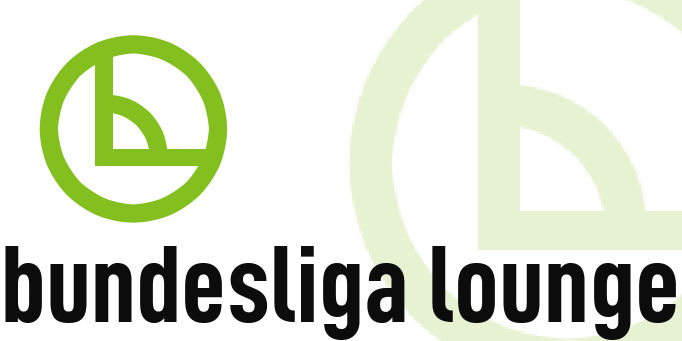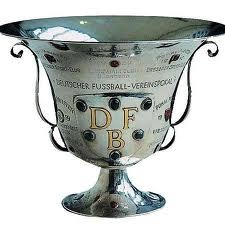The DFB Pokal – a potted history

 Hans von Tschammer und Osten is unlikely to be a name that resonates to any great depth, or which means a notable amount to many. However, next Tuesday and Wednesday, his legacy will, once again, be reprised – albeit in something of a reinvented form – as the DFB Pokal enters the quarter-final stage.
Hans von Tschammer und Osten is unlikely to be a name that resonates to any great depth, or which means a notable amount to many. However, next Tuesday and Wednesday, his legacy will, once again, be reprised – albeit in something of a reinvented form – as the DFB Pokal enters the quarter-final stage.Given the post of Reichssportkommisar (later retitled Reichssportführer) in 1933, von Tschammer und Osten had no real interest in sport, to the extent that many believed his appointment was originally intended for his brother. Yet his standing in the Nazi sporting annuls was cemented in 1935, when he announced the formation of a competition “open to 14,000 football clubs”, and donated the resplendent Goldfasanen-Pokal (Golden Pheasant Cup) as the prize, engraved with his name.
By Christmas of that year, the very first final had come and gone, with Nürnberg getting the better of Schalke by 2 goals to nil, in front of a reported 55,000 fans in Düsseldorf. As a showpiece of the Nazi ideal, the Tschammerpokal was hailed an undoubted triumph, and began to grow in entrant numbers and popularity. The adoption into the Nazi philosophy was more clearly evidenced just over 12 months later, as the final moved home to the newly-reconstructed Olympiastadion, in Berlin. With its foundations embedded in those of its Prussian-built predecessor, the stadium was the very embodiment of the Nazist mantra, as cast in the unmistakable, quintessential architecture of the time. Having been the predominant site for the 1936 Olympic Games, the stadium was ideal as the venue for a burgeoning competition, and would play host to the final for six of the next eight years.
Those early years saw Schalke feature on a regular basis, though die Königsblauen only managed one victory from the five finals they contested, as not even the advent of World War Two could halt the competition. The last knockings of the inaugural version did, however, come in 1943, as the ravages of war finally took hold. And in an ironic twist, as Hitler’s empire began to subside, the Tschammerpokal also left the geographical bounds of Germany, First Vienna triumphing 3-2 (after extra time) over Hamburg.
It would be almost ten years until the Cup was reprised, and a further thirty before the final returned to Berlin.
A New Dawn
In a few days’ time – on the 7th – the minnows of Holstein Kiel will square off against last year’s Bundesliga champions, Borussia Dortmund, in the very definition of ‘a potential banana skin’ for the illustrious visitors. And it was under the rebranded guise of the DFB Pokal that the tournament first began to foster a reputation for being the ‘great leveller’, encompassing the vibrancy and revitalisation being felt across the divided nation in the post-War era. Such was encapsulated in the very first round of its first year back, as the relative unknowns of Concordia Hamburg put the giants of Dortmund to the sword; 4-3. And, as if to fully shed the skin of the memories of past associations, the 1953 final was held on the same ground as the very first, purging Düsseldorf of all remaining connotations.
However, one source of discomfort did remain into the fresh, bold age of German football – the
 Goldfasanen-Pokal itself. By the end of summer 1949, the DFB had been resurrected, and lay under the directorship of Dr Paul Josef Bauwens. The former referee and player had ascended to the helm of the organisation, embodying a more tolerant, inclusive era. With a Jewish wife, ‘Peco’ – as he was affectionately known – found the trophy to remind him a little too much of the persecution and quintessential anti-Semitism of the Nazi machine for comfort. Yet it wasn’t until 1965 – almost 12 months after his death – that a permanent replacement was designed.
Goldfasanen-Pokal itself. By the end of summer 1949, the DFB had been resurrected, and lay under the directorship of Dr Paul Josef Bauwens. The former referee and player had ascended to the helm of the organisation, embodying a more tolerant, inclusive era. With a Jewish wife, ‘Peco’ – as he was affectionately known – found the trophy to remind him a little too much of the persecution and quintessential anti-Semitism of the Nazi machine for comfort. Yet it wasn’t until 1965 – almost 12 months after his death – that a permanent replacement was designed.Weighing around 27kg (12.5lb), and with an estimated market worth of some €100,000, ‘The Pot’ is one of the most iconic and valuable Cups on offer in modern sport, and the eight remaining sides in this year’s competition represent a cross-section of everything trumpeted by contemporary Germany, and envisaged for the prescient nature of her sport.
Quarter-final line-up:
07/02/2012 Holstein Kiel - Borussia Dortmund
08/02/2012 1899 Hoffenheim - Greuther Fürth
08/02/2012 Hertha Berlin - Borussia Mönchengladbach
08/02/2012 VfB Stuttgart - Bayern Munich
The current format of the Pokal largely dates back to 1974, and the formation of the 2.Bundesliga. Since that point, all Bundesliga and 2.Bundesliga sides have enjoyed automatic entry to the first round proper (along with the top four 3.Bundesliga teams from the previous season). That privilege takes 40 of the 64 spots in round one, with the other 24 coming from regionalliga cup champions (of which there are 21), and the three most populous regional associations. Since 2008, reserve teams have been banned from entering. Rounds one and two then see the amateur/ lower ranked sides given home draws against those of more renown, over 90 minutes, without replays (a decision dating back, once again, to the 1974 season).
With last year’s winners – Schalke – having already succumbed, and the other three sides from this year’s Bundesliga top four all drawn away from home, the opportunity for European competition beckons for Kiel, Hoffenheim, Greuther Fürth, Hertha and VfB. The most recent of the eight remaining teams to have enjoyed success (other than Bayern) was VfB, and that was all the way back in 1997, when they triumphed over Cottbus by two goals to nil (though they also reached the final ten years on, losing out to Nürnberg, 3-2). Fürth, Hertha, Hoffenheim and Kiel, meanwhile, have never hoisted the eight-litre pot aloft (the latter two having never even reached the semi-final stage before).
Bayern – somewhat unsurprisingly – are the most successful side in the contest’s history, with 15 wins and two runners-up berths to their name. ‘Gladbach have three wins (alongside two further finals), and Dortmund have a 50-50 record over their four final appearances.
Whatever happens over the two days of quarter-final action, it has never been more true to acclaim of the Pokal as being in rude health. And the May showpiece – which has been held in Berlin as a matter of course since 1985 – will no doubt produce its requisite carnival feast of colour and football. While other nations’ cup competitions appear on the wane, Hans von Tschammer und Osten’s creation has grown to wondrous proportions, shedding its initial forbearance, and embracing a composite culture in a way that fundamentally celebrates all that is great about German football!



 Apple podcasts
Apple podcasts Google podcasts
Google podcasts Spotify
Spotify TuneIn
TuneIn RSS feed
RSS feed Instagram
Instagram Blue Sky
Blue Sky